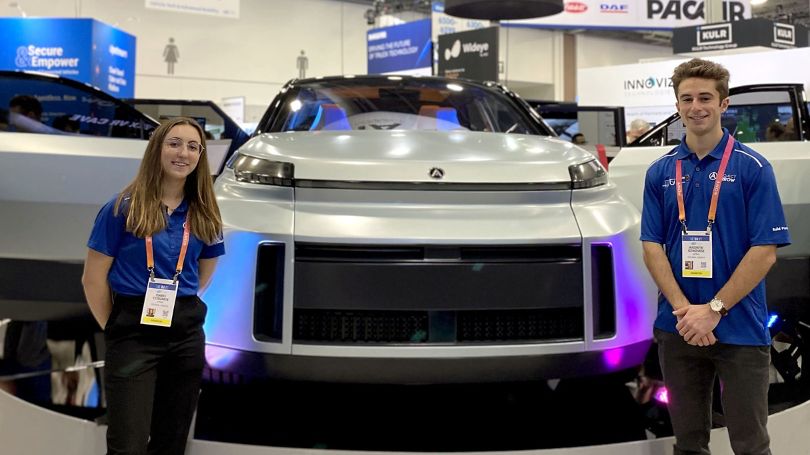As part of our “An Arrow aimed at tomorrow” story series, this article, along with How to build your own electric car, and Autonomous EV engineering in Canada follows the building and assembly of Canada’s first electric and automated vehicle.
A focus on the future of science with Andrew Genovese
A lot of parents might know the dread of a 700-piece Lego set. The dread accelerates when the little builder decides to go rogue and chuck the instruction booklet into the blue bin. You just know that you’re in for an unmitigated Danish disaster that will lead to countless Lego indentations on your instep. But when that rogue Lego-making kid is Andrew Genovese…a born engineer with a real drive for automobile construction, you have nothing to worry about. With some education and engineering training, he'll go on to do great things.
At that young age, growing up in Burlington, Andrew had an inkling of where his future was headed with engineering as he created “my own little vehicles without an instruction manual. Then I moved up to building little remote-control cars. I was always really passionate about vehicles. And then…” Andrew discovered that “Math and science was probably the way to go, and more particularly automotive engineering”.
Putting dreams into drive with the help of automotive engineers
For his university career, Andrew chose Oshawa’s Ontario Tech University because of its accredited Automotive Engineering Program and its ACE Climatic Research Facility. As he says, he knew that he found “the perfect opportunity for me to really follow my dreams and pursue a career in the industry”. Now that he’s working at ACE, he concludes, “it's a dream come true so far. It really helped me start my career.”
Where theoretical rubber meets the road with automotive engineering
It turns out, attending an academy of high-level applied education learning was a lot more applied than he imagined. In describing his engineering course work, on what he thought was another theoretical project on an Electric Vehicle’s performance, he was, “given a bunch of values to calculate performance characteristics and basically find out how the vehicle functions…find a speed acceleration…” Andrew soon discovered that “it wasn't just some random project, it was an actual physical project that was taking place at our school and ACE facility here”. Sparked by the possibilities of Project Arrow, building Canada’s first fully electric and automated vehicle, he knew he had to get involved as an automotive engineer. When he saw a job posting for the project, he immediately applied and says “here I am now, eight months into the job and loving every day”.
Automotive engineering is not quite Lego
Apparently, building a prototype EV from scratch isn’t, as Andrew says, “as easy as my Lego sets”. His was the daunting and remarkable task of assembling the vehicle where he was “pretty much hands on every single day”. Since most of the vehicle parts weren’t tried and true assembly line produced, Andrew discovered many challenges with the engineering process. Uniquely manufactured parts don’t always cooperate with best-laid plans in the automotive industry, so he had to “come up with solutions to make them fit properly and line up accordingly to plan”, and concludes that it, “was definitely challenging. But rewarding – once it finally came together”.
Preparing to put an automotive engineer career in gear as a graduate
For Andrew, the experience working on this engineering project provided phenomenal opportunities to collaborate with executive supervisors, engineers, machinists, and other students. But it didn’t end there. He, along with other teammates, attended the CES (Consumer Electronics Show) held annually in Las Vegas. As one of the most influential global tech events, CES provided a one-of-a-kind experience for an undergraduate like Andrew. One of the youngest automotive engineer exhibitors at the show, Andrew was thrilled to mention, “meeting other industry professionals and telling them that we're students kind of blew their minds…this is what we're involved with…and we're really trying to get into the industry to share our knowledge and experiences”.
Solving today’s existential threats and problems is daunting. But Andrew represents some certainty in our uncertain environmental future.

